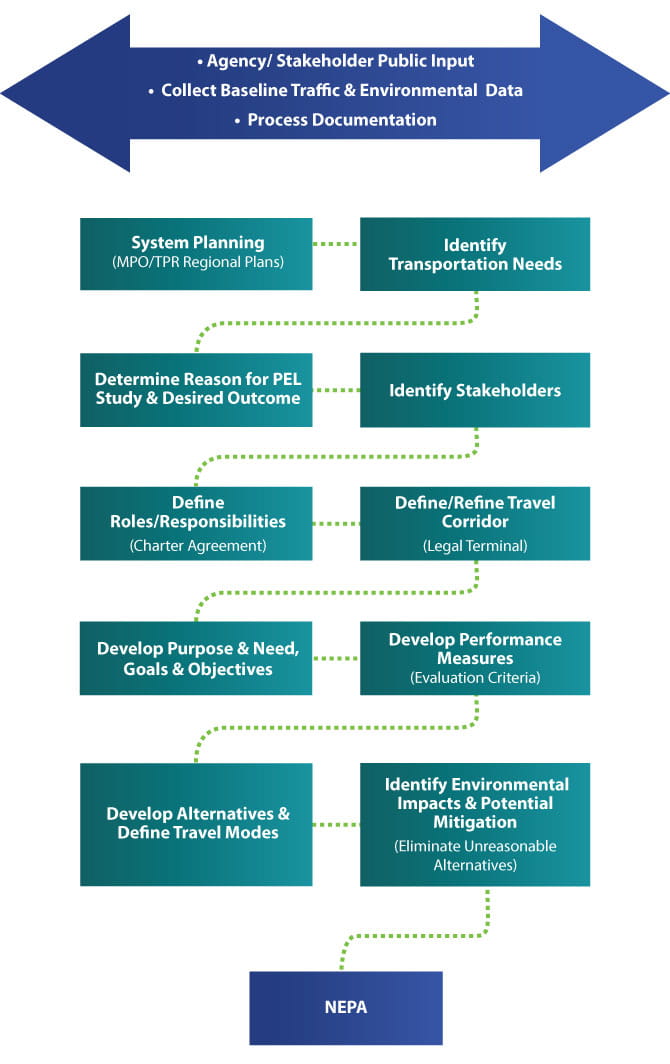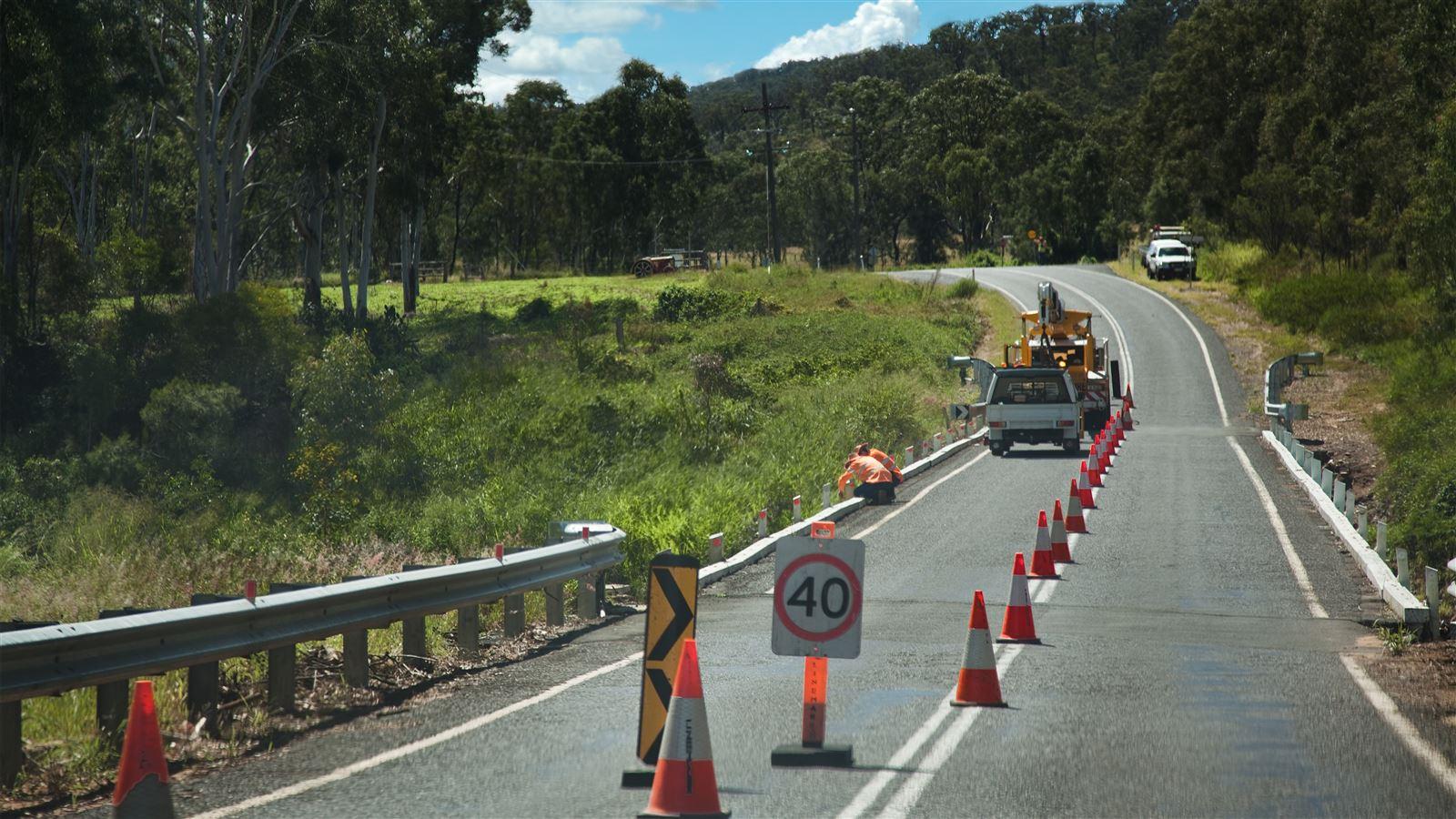Enhance Project Delivery with the Planning and Environmental Linkage (PEL) Process
Whether your priority is to identify a project that serves the needs of your community, shorten your project delivery time, or assess the feasibility of a project and its alternatives, the Planning and Environmental Linkage (PEL) process can help. PEL helps planners identify and evaluate transportation needs, and evaluate relevant environmental concerns, such as ecological impacts, conservation and restoration efforts. By following the PEL process on your project, you can more effectively stimulate collaboration early and create a strong roadmap for the project’s future.
What is PEL?
PEL is a process that identifies and links transportation issues and environmental concerns to guide decision making and conduct valuable analyses that can identify and prioritize infrastructure improvements, develop the need case for a project, establish a project scope and schedule, identify a range of alternatives, and support downstream National Environmental Policy Act (NEPA) reviews.
Using PEL to Create a Roadmap to Future Improvements
Typically used to identify, define and develop long-range planning initiatives, a PEL study brings agencies and the appropriate stakeholders to the table early. When a road is laid down, it’s not just a road. It can bring economic development, which is why it’s important to engage all agencies and parties when the process is just starting. That’s why all projects, particularly ones spanning multiple jurisdictions, can greatly benefit from PEL studies.
The PEL process encourages planners to:
- Identify network gaps and transportation needs. System planning helps identify current conditions and uncover any gaps and areas of improvement to create a need statement.
- Identify and establish roles and responsibilities for community stakeholders. Community outreach efforts help establish an advisory group of agency representatives, consultants, community members and other key stakeholders that will serve as a resource throughout a project’s lifetime.
- Define or redefine the travel corridor for which you would like to conduct a planning feasibility study. Working with key stakeholders and community members to pinpoint travel corridors and/or areas of interest provides a holistic approach to project planning, narrowing down the transportation needs identified during system planning.
- Develop a purpose statement. Define the project’s purpose by outlining goals, objectives and performance measures that will help guide the project and measure success throughout its lifetime.
- Create a range of alternatives and assess the feasibility of each alternative. Screening for alternatives helps revisit the original purpose and need for the project. During this phase, planners can reassess things, identify existing planning flaws and consider alternative modes or initiatives that will help solve the problem at hand.
- Identify environmental impacts and resources. Doing so guides project teams to discuss potential impacts, the overarching effects they may have, and mitigation and planning strategies to address these concerns. Some major considerations planners should make during the last step include tolling and finance measures, modal options, land use and environmental concerns, mitigation of potential project impacts, travel demands, regional development and growth, population and employment analysis, documentation of environmental conditions, and more.

PEL Unifies Project Teams to Expedite NEPA Permitting
With so many moving parts to consider on a planning project, the PEL process provides a framework for project teams to follow, helping expedite the NEPA process and ultimately shortening project delivery time by mitigating problems during early planning stages. Detailed documents collected help project teams reap the full benefit of the PEL process and transition seamlessly NEPA permitting, as documents prepared throughout the PEL process can be carried forward to the NEPA process with little to no alterations to save time and effort during permitting.
These documents, in combination with the early coordination and relationship building between state, local, and federal agencies, NEPA practitioners, and public stakeholders, provides extra support to corridor planning projects and unifies project teams across disciplines and agencies to eliminate duplicate efforts.
Leveraging the improved coordination between parties and close relationships to raise awareness on important matters at an early stage unifies expectations, validates or challenges project goals, and ultimately helps to mitigate problems early on before construction begins. With the level of involvement PEL prompts, project members feel like they are a part of building their community. They can watch their project get funded, go from design to completion, and then see the positive impacts it has on their community.







